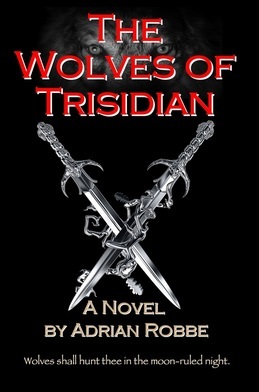The Use of Light and Shadows by a Film Director
Light as a Tool of Cinema
One of the major elements that is key to the effective communication in a motion picture is the use of light. This is a major tool of cinema used by a film director. Through the use of cameras, lights, lenses, and editing techniques, a director can actually mold the perception of the audience viewing the movie. This is the essence of the aesthetics (i.e., the understanding and appreciation of beauty) of cinema. With the tool of light, a film director can express artistic talent through the media of film.
Light and the Varying Degrees of Shadows
Light is the signal that our eyes receive and our brain translates into perceptions" (Zettl 16). Therefore, when a person views a movie, they are actually looking at a light show. When the images appear at 24 frames per second, the human eyes see them as moving objects. This phenomena is called "persistence of vision." Light can be manipulated through the use of shadows to create moods that make the viewer "see and feel in specific ways" (Zettl 34). For example, varying degrees of shadows can be used to accentuate drama, mystery, and suspense. This was an effective technique that was used by film director Orson Welles in his film, Citizen Kane.
The video "Citizen Kane - Susan Alexander at the El Rancho" at https://youtu.be/47l_q4YjSc4 was uploaded by carbondaleyarngirl to You Tube. No copyright infringement is intended; it is being provided here as "fair use" as part of this social commentary, historical reference, fair use blog. "Copyright Disclaimer Under Section 107 of the Copyright Act 1976, allowance is made for 'fair use' for purposes such as criticism, comment, news reporting, teaching, scholarship, and research. Fair use is a use permitted by copyright statute that might otherwise be infringing. non-profit, educational or personal use tips the balance in favor of fair use." Sample Application of the Use of Shadows to Novel Writing
I incorporated the use of shadows into several different scenes throughout the writing of my epic medieval fantasy novel, The Wolves of Trisidian. I purposely introduced shadows into one particular scene involving the protagonist, Sir Geoffrey Talbot, when he was chasing after a mysterious man dressed in a black, hooded cape who was hiding among the crowd outside the chapel at Castle Stonehaven. As you read the following narrative excerpt from the book, you will experience firsthand how incorporation of shadows into the narrative of your novel can introduce feelings of drama, mystery, and suspense. Shadows can be caused by a body or some other type of object that intercepts light and subsequently casts a dark image or images onto the ground or some other type of surface. Effective use of shadows can also introduce periods or instances of unhappiness, gloom, doubt, mistrust, fear, as well a doubt. They can also be used to solicit feelings of a prevailing or pervasive threat in the mind of the reader.
Narrative Excerpt with the Use of Shadows in The Wolves of Trisidian
My heart started beating faster and faster. Sweat started to seep out of my brow. When I dashed into the front door of the stable, I saw him running rapidly down the center aisle of the barn. I shouted, “William, is it you? Stop!” Again, he gave no answer.
I didn’t want to lose sight of him. The soles of my shoes pounded the ground faster and faster. The rays of the bright sun flashed through the bleak darkness inside the stallion’s barn. Light was beaming through the broken timbers in the roof of the old, wooden structure. Dark shadows filled the stable. They appeared like demons trying to spear my soul. My heartbeat skipped. It faltered for a fleeting instant. Thoughts of dread and terror scrambled through my mind.
Reference
Zettl, Herbert. Sight, Sound, Motion -- Applied Media Aesthetics. Belmont, CA: Wadsworth Publishing Company, 1973. The Wolves of Trisidian -- A Novel by Adrian Robbe
The Wolves of Trisidian -- A Novel by Adrian Robbe
One of the major elements that is key to the effective communication in a motion picture is the use of light. This is a major tool of cinema used by a film director. Through the use of cameras, lights, lenses, and editing techniques, a director can actually mold the perception of the audience viewing the movie. This is the essence of the aesthetics (i.e., the understanding and appreciation of beauty) of cinema. With the tool of light, a film director can express artistic talent through the media of film.
Light and the Varying Degrees of Shadows
Light is the signal that our eyes receive and our brain translates into perceptions" (Zettl 16). Therefore, when a person views a movie, they are actually looking at a light show. When the images appear at 24 frames per second, the human eyes see them as moving objects. This phenomena is called "persistence of vision." Light can be manipulated through the use of shadows to create moods that make the viewer "see and feel in specific ways" (Zettl 34). For example, varying degrees of shadows can be used to accentuate drama, mystery, and suspense. This was an effective technique that was used by film director Orson Welles in his film, Citizen Kane.
The video "Citizen Kane - Susan Alexander at the El Rancho" at https://youtu.be/47l_q4YjSc4 was uploaded by carbondaleyarngirl to You Tube. No copyright infringement is intended; it is being provided here as "fair use" as part of this social commentary, historical reference, fair use blog. "Copyright Disclaimer Under Section 107 of the Copyright Act 1976, allowance is made for 'fair use' for purposes such as criticism, comment, news reporting, teaching, scholarship, and research. Fair use is a use permitted by copyright statute that might otherwise be infringing. non-profit, educational or personal use tips the balance in favor of fair use." Sample Application of the Use of Shadows to Novel Writing
I incorporated the use of shadows into several different scenes throughout the writing of my epic medieval fantasy novel, The Wolves of Trisidian. I purposely introduced shadows into one particular scene involving the protagonist, Sir Geoffrey Talbot, when he was chasing after a mysterious man dressed in a black, hooded cape who was hiding among the crowd outside the chapel at Castle Stonehaven. As you read the following narrative excerpt from the book, you will experience firsthand how incorporation of shadows into the narrative of your novel can introduce feelings of drama, mystery, and suspense. Shadows can be caused by a body or some other type of object that intercepts light and subsequently casts a dark image or images onto the ground or some other type of surface. Effective use of shadows can also introduce periods or instances of unhappiness, gloom, doubt, mistrust, fear, as well a doubt. They can also be used to solicit feelings of a prevailing or pervasive threat in the mind of the reader.
Narrative Excerpt with the Use of Shadows in The Wolves of Trisidian
My heart started beating faster and faster. Sweat started to seep out of my brow. When I dashed into the front door of the stable, I saw him running rapidly down the center aisle of the barn. I shouted, “William, is it you? Stop!” Again, he gave no answer.
I didn’t want to lose sight of him. The soles of my shoes pounded the ground faster and faster. The rays of the bright sun flashed through the bleak darkness inside the stallion’s barn. Light was beaming through the broken timbers in the roof of the old, wooden structure. Dark shadows filled the stable. They appeared like demons trying to spear my soul. My heartbeat skipped. It faltered for a fleeting instant. Thoughts of dread and terror scrambled through my mind.
Reference
Zettl, Herbert. Sight, Sound, Motion -- Applied Media Aesthetics. Belmont, CA: Wadsworth Publishing Company, 1973.
 The Wolves of Trisidian -- A Novel by Adrian Robbe
The Wolves of Trisidian -- A Novel by Adrian Robbe
Published on September 28, 2016 20:02
No comments have been added yet.



